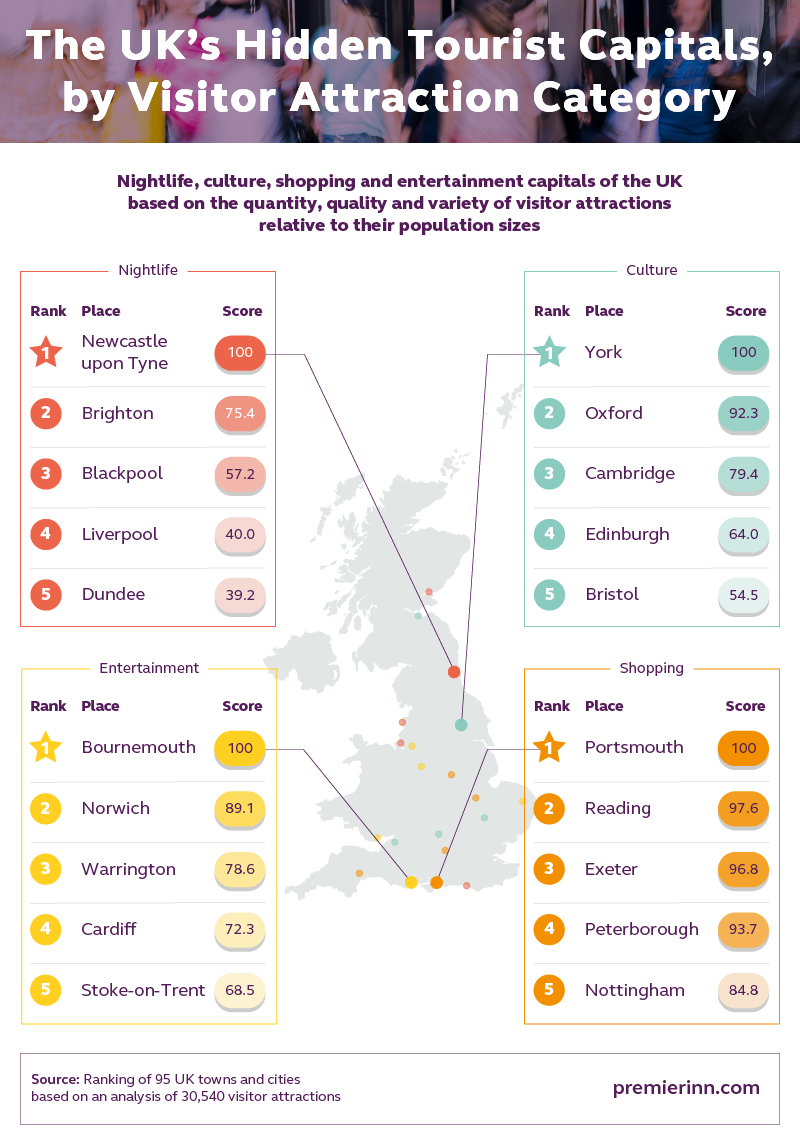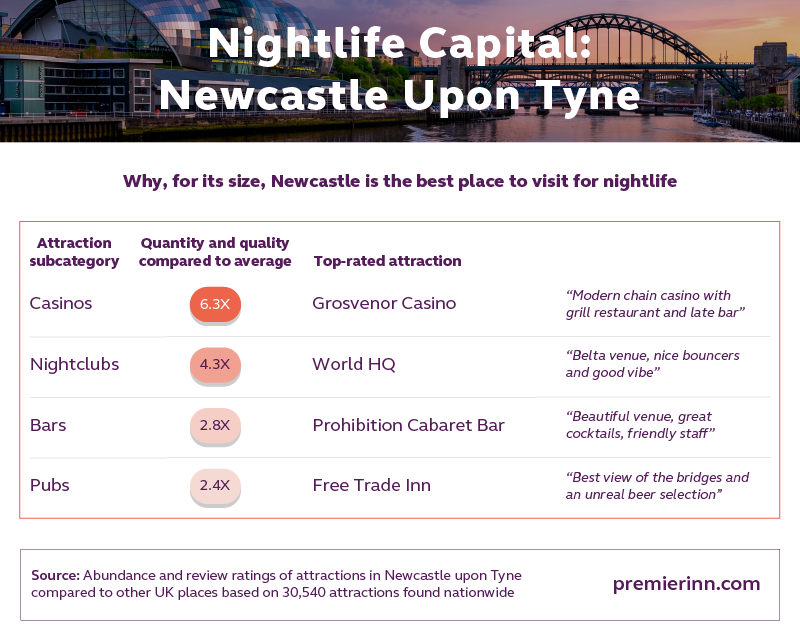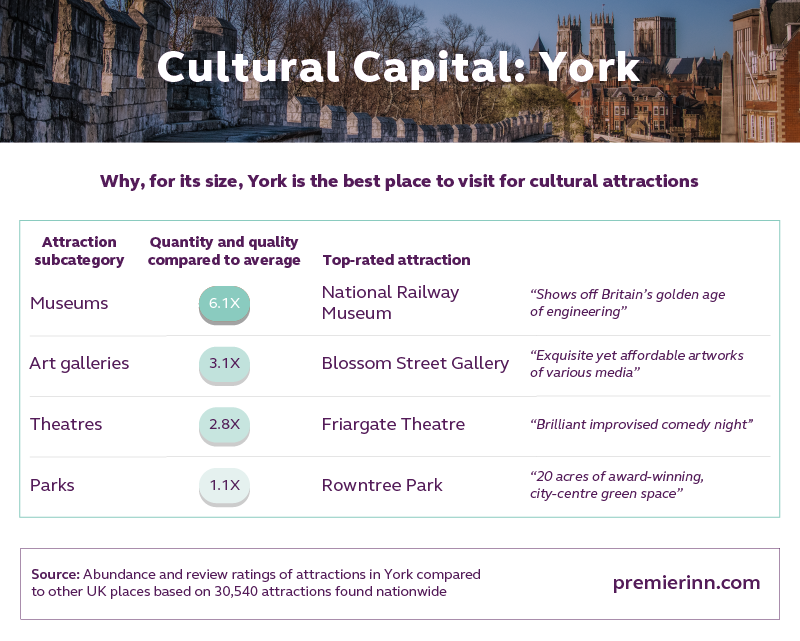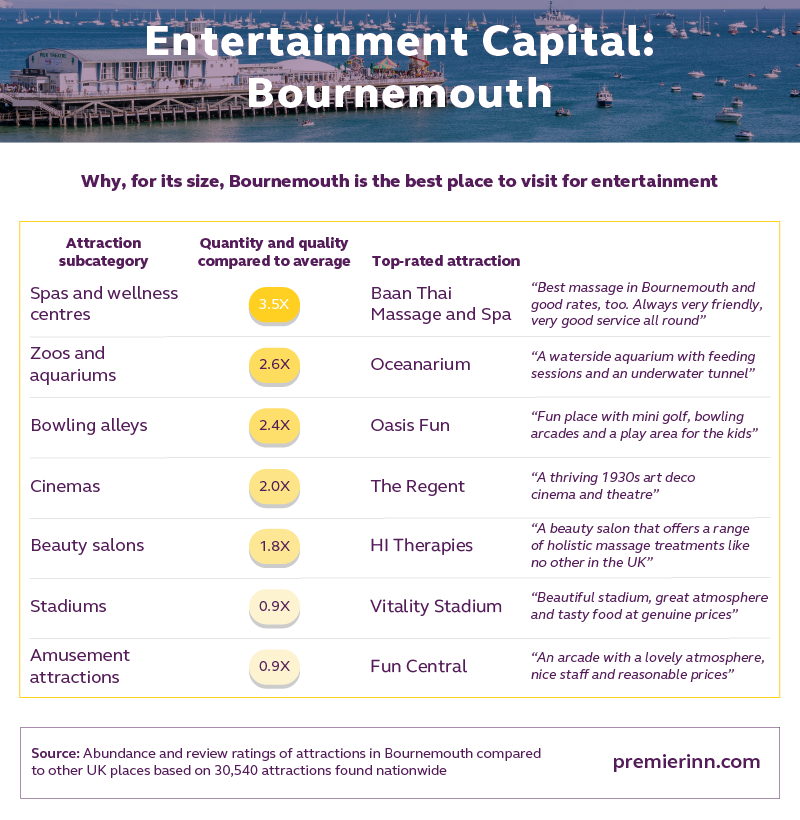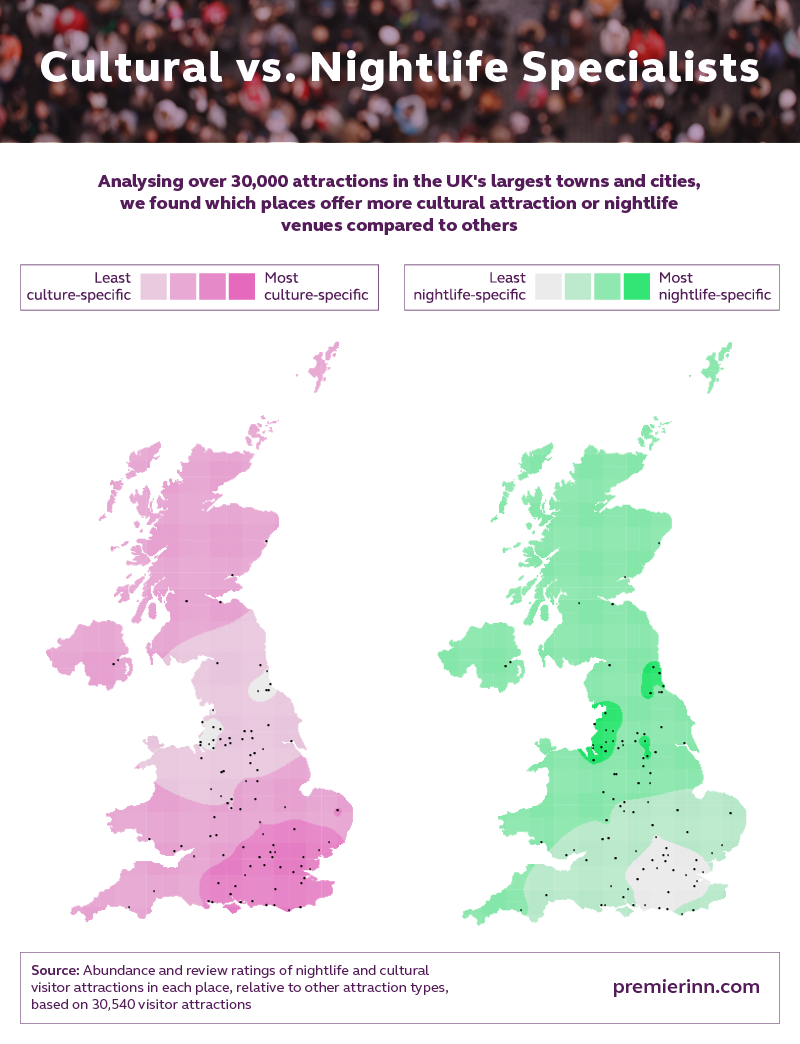- We discovered the UK’s most unsung tourist destinations by calculating which places have the widest and best-rated selection of attractions for their size.
- Newcastle upon Tyne is the ‘hidden tourist capital of the UK’, earning the best score for nightlife plus strong selections of entertainment, culture and shopping attractions.
- The culture capital of the UK is York, which has six times more top-rated museums for its size than the average place.
- With miles of coastline and endless indoor activities, Bournemouth is the entertainment capital of the UK.
- Portsmouth’s stellar selection of markets, independent shops and shopping centres makes it the shopping capital of the UK.
- Our findings suggest that Northern cities specialise in nightlife, whereas Southern cities are cultural connoisseurs.


